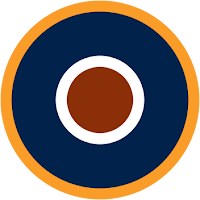The Bristol Beaufighter was also employed by many Royal Australian Air Force's (RAAF) squadrons all around the globe.
The first of such was No. 456 Squadron which was formed under Royal Air Force's (RAF) command at RAF Valley, (Wales) in June 1941 as a night-fighter unit.
Although initially equipped with the Boulton-Paul Defiant Mk. I, they transitioned to the Bristol Beaufighter Mk. IF, completing the transition in September 1941 and becoming fully operational in November. They were at first tasked with flying defensive patrols over the Irish Sea and scoring their first kill in January 1942. This squadron kept their Beaufighters Mk. I and Mk. II, flying as a defensive unit, until December 1942 when they began to transition to the De Havilland Mosquito fighter.
However, for a brief period, ranging from July 1942 to January 1943 (or March, according to some other sources), they operated the Beaufighter TF. Mk. X too as part of their new anti-shipping strike role, operating mainly over the Bay of Biscay.
On Australian soil, the first RAAF's squadron to operate the Beaufighter was No. 30 (City of Sale) Squadron, which was formed at RAAF Richmond (New South Wales, but close to Sydney) and was initially equipped with some of the fifty-four of the Fairey-built Beaufighter Mk. IC that the Australian Government bought in 1941 and 1942.
As said, this unit was formed on 9th March 1942 as a long-range fighter unit and, after some training period, they were rebased to RAAF Townsville (Queensland) with a detachment to RAAF Milne Bay (Papua) from where they attacked Japanese shipping, becoming the first unit of the RAAF with Beaufighters to see action. Shortly later, they were deployed to Port Moresby to operate as a low-level ground support unit, where they Beaufighter proved to be highly successful.
Operating from Port Moresby and surrounding areas, their main task to strike Japanese shipping and naval bases, with occasional ground attack missions supporting the Kokoda trail campaign and various Japanese airfields and bases.
In early 1943 they took part in the Battle of Bismarck Sea, conducting various low-level attacks on Japanese ships, where they proved to be highly effective.
In July they were moved to RAAF Goodenough Island to keep their anti-shipping role while also striking on Japanese airfields.
By 1944 they were flying a mixture of Beaufighter Mk. I to Mk. VI and also the Mk. X sent straight from the United Kingdom. By September 1944 they were also flying the Mk. 21 (the Australian-built variant of the Beaufighter)
They accompanied Australian forces all along their campaigns through Borneo, Celebes and Tarakan and they were disbanded in December 1945.
The first Australian unit to receive the Australian-built Mk. 21 (of which we will write another post) was No. 31 Squadron RAAF (which had an operational history identical to that of No. 30 Squadron) , with another unit, No. 22 Squadron converting to the type, replacing their Douglas Bostons in late 1944.
Two additional units operated the Beaufighter Mk. 21, although for a brief period of time, Nos. 92 and 93 Squadrons, although only No. 93 flew it in fruitless patrols during the last two weeks of the war operating from Labuan.
Sources:
1st https://en.wikipedia.org/wiki/No._456_Squadron_RAAF
2nd https://en.wikipedia.org/wiki/No._30_Squadron_RAAF
3rd https://en.wikipedia.org/wiki/No._31_Squadron_RAAF
4th https://www.historyofwar.org/air/units/RAAF/456_wwII.html
5th Signal Squadron - Aircraft In action 153 - Bristol 'Beaufighter' in Action
6th SAM Publications - Modellers Datafile 6 - Bristol Beaufighter


No comments:
Post a Comment